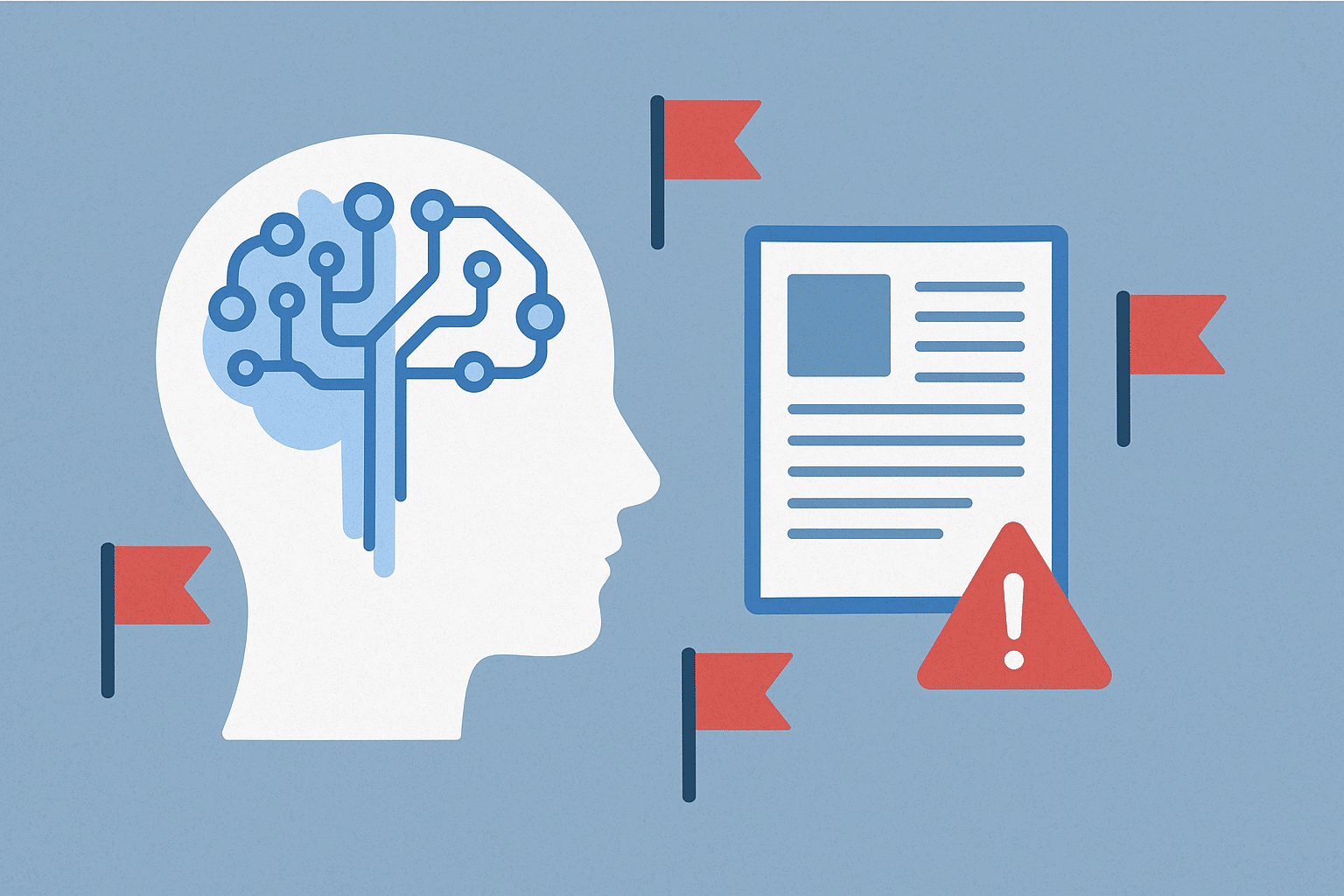AI, and specifically generative AI, can be an incredibly powerful tool for IT consultants and job seekers.
When writing a cover letter, have you ever been stuck trying to get the wording of a sentence just right? Or struggled to come up with a resume bullet point (or blog topic) that really stands out?
Well, GenAI tools like ChatGPT and Gemini are really good with helping with that. They help solve these “blank page” problems quickly and creatively.
The challenge, however, comes with over-reliance. When candidates lean too heavily on AI to generate resumes, cover letters, or portfolio content, subtle patterns can emerge that raise red flags for recruiters and hiring managers.
In this blog post, we’ll review some of the obvious red flags that signal AI-generated content, explain why over-reliance matters for job seekers, and discuss the most effective ways for using AI as a tool.
Red Flags That May Signal AI-Generated Content
Here are a few common signs that content may have been heavily AI-assisted:
- Overuse of Em Dashes – The em dash (—) can function like a comma, a colon, or parenthesis – and AI loves to use them. But despite my use in this description, most people use them sparingly in their writing. So seeing them has become an obvious tell.
- Grouping in Threes – AI often organizes ideas in sets of three for readability (e.g., “technical skills, collaboration, and leadership”). While it’s intended to make content easy to read, its overuse makes content feel formulaic.
- Phrases like “In today’s ever-evolving IT landscape” – AI-generated content can favor repetitive, broad phrases that sound polished but generic. Phrases like “In today’s ever-evolving IT landscape” or “Today’s fast-paced world,” are usually dead giveaways that the content was AI-generated.
- Use of Colons in Titles or Headings – AI often uses colons in titles and headings (e.g., “Using AI in Your Job Search: How to Avoid Common Red Flags”). While use of colons results in effective titles (and one that’s been used forever), this style has become an early indicator that the content may be heavily influenced by AI.
Why This Matters for Job Seekers
Recruiters and hiring managers can notice these patterns, especially as they become more and more commonplace.
This presents an issue because over-reliance on AI can make resumes, cover letters, portfolios, or LinkedIn content feel impersonal and unoriginal. In some cases, it may even result in candidates being disqualified for positions.
For IT professionals, authenticity is critical. Your work demands both technical expertise and human insight, something AI can’t fully replicate. Hiring managers want to hear your unique perspective. If they spot you’re not able to generate original content (i.e., your resume) on your own, it may be an easy pass for them.
How to Use AI Effectively When Generating Content
All of this isn’t to say, however, that you shouldn’t be using AI. It’s just that AI works best as a support tool, not a replacement for your own voice (AI even helped me edit this post).
Use AI to:
- Overcome “blank page” moments (aka writer’s block), like drafting bullet points or generating initial ideas.
- Rewrite or clarify sentences that don’t quite sound the way you want.
- Simplify concepts and find a more concise way to explain ideas.
- Proofread for grammar, spelling, and punctuation errors.
By striking this balance, you can leverage AI’s efficiency while maintaining your authenticity.
While AI can help you get unstuck and polish your content, your authentic voice is what truly stands out. As AI becomes more widely used, let it support your work rather than replace it. Doing so will make you far more likely to stand out to recruiters and hiring managers.








